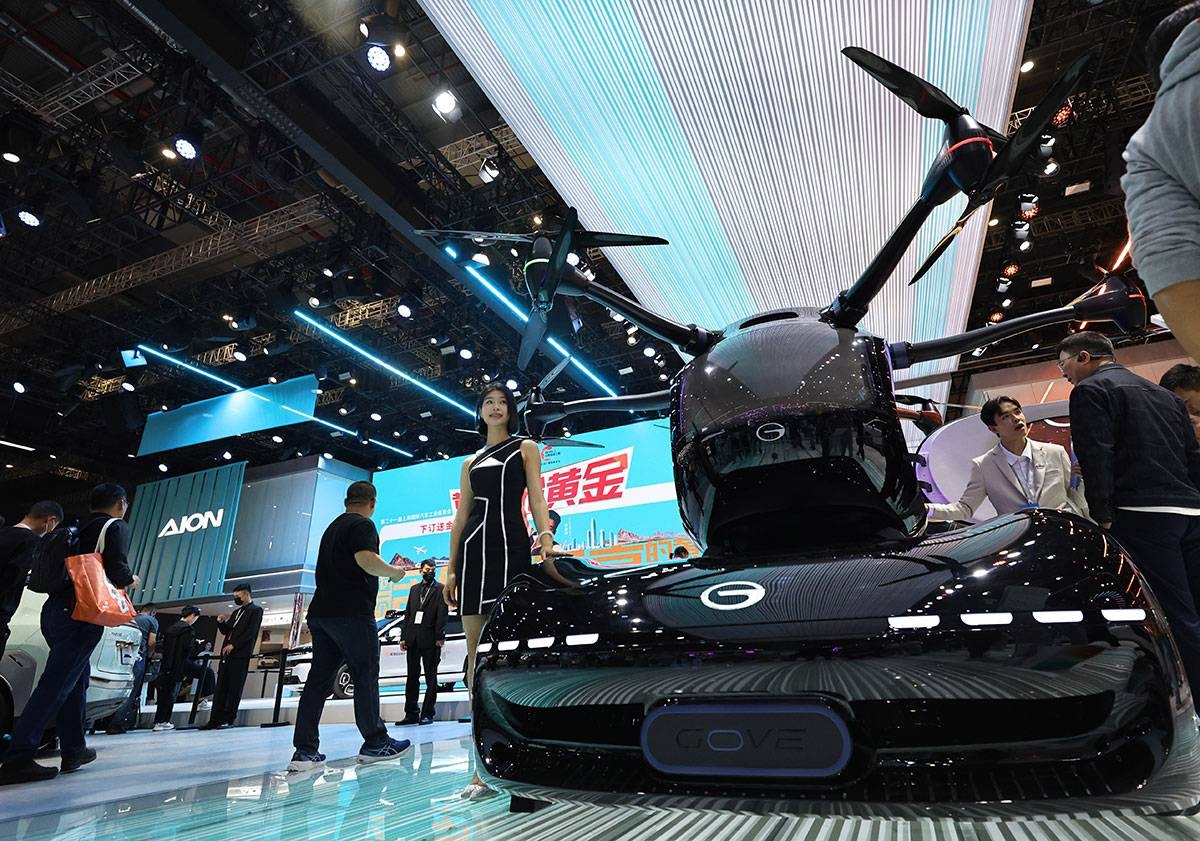
SHANGHAI — At the ongoing 21st Shanghai International Automobile Industry Exhibition (Auto Shanghai 2025), Chinese new energy vehicle (NEV) maker XPENG's humanoid robot, IRON, stole the spotlight by debating the merits of the company's self-developed flying car with its creator, CEO He Xiaopeng.
The concept merges an electric ground car with an eVTOL aerial component, and since its unveiling at Airshow China last year, this design has attracted almost 5,000 pre-orders. Shipments are set to begin in 2026.
This is the Land Aircraft Carrier, the first-of-its-kind mass-produced airborne automobile," IRON announced, lifting its left arm to give a thumbs-up to those watching. "The technology behind this is simply state-of-the-art!
This blend of robotics and airborne transportation marks a seismic change: China’s automotive sector is no longer limited to four-wheeled vehicles, as manufacturers are challenging conventions and reshaping how we think about movement. With integrated artificial intelligence, automobiles aren’t merely progressing; they’re expanding their scope towards flying machines and human-like robots, crafting a cutting-edge triad for the age of AI.
This remarkable display of technology stems from outstanding industrial achievements. According to official statistics, automobile production and sales in China experienced more than 10% yearly growth during the initial three months. Furthermore, as per insights from sector experts, China’s low-altitude market is swiftly closing in on the RMB 1 trillion ($138.8 billion) threshold, with a compounded annual expansion rate nearing 30%.
Zhang Yongwei, the vice chairman and secretary-general of the NEV industry think tank China EV 100, stated, “The smart car sector is transitioning into a comprehensive intelligent industry.” He further explained, “Intelligent vehicles will travel on streets, aerial taxis will rise into lower altitudes, and humanoid robots will exemplify AI-powered transportation.”
At the exhibition, this multi-faceted concept came into focus through three key presentations: Chery unveiled their "triple-bodied" hybrid winged vehicle designed for Southeast Asia’s market looking for efficient inter-island travel options. Meanwhile, GAC Group introduced their latest model, the third-gen GoMate robot, which can autonomously move across industrial spaces and operates for up to six hours thanks to advanced automotive-grade power systems.
A company spokesperson stated that our humanoid robot named Mornine is currently functioning as a digital shopping aide at Chery’s dealership locations in Malaysia.
At the exhibition, FAW Group presented their Hongqi-brand flying car, boasting a maximum flight distance exceeding 200 kilometers and equipped with an advanced cockpit system designed for providing up-to-date audio and video information to simplify operations. This Changchun-headquartered company verified that the craft will conduct its first aerial test later this year, ensuring all developments comply with rigorous airworthiness regulations.
He Xiaopeng mentioned that future automobile exhibitions will not only display vehicles but also highlight advanced technology and integrated artificial intelligence.
Electric automobiles, aerial transport units, and human-like automatons have overlapping technological bases and sourcing networks. According to industry observers, electronic vertical take-off and landing crafts could utilize as much as eighty percent of their parts sourcing from the same channels used by battery-powered vehicles, thus benefiting from China’s well-established infrastructure for these vehicles to achieve economic savings.
“Intelligent vehicles, eVTOLs, and robots all have their origins in similar technologies,” Zhang stated, noting that the control systems, essential semiconductor chips, and software frameworks created for smart cars can be readily applied to eVTOL aircraft. Many of these parts can also be used in human-like robots.
This collaboration of technology has been confirmed by numerous experts within the field. The president of Aptiv China and Asia-Pacific, Yang Xiaoming, characterized flying cars as "electrified vehicles capable of flight," noting how they connect advancements in automobile electrification with aviation regulations. Meanwhile, companies such as Digua Robotics view automobiles as essentially "robots on four wheels."
